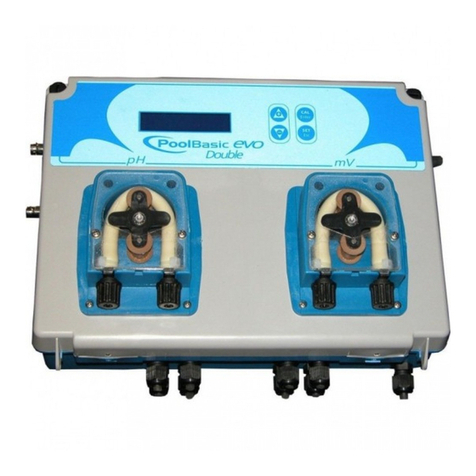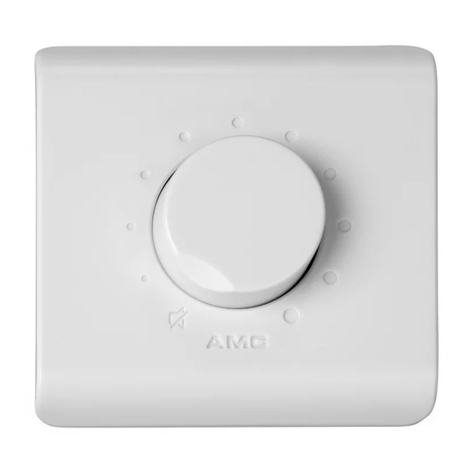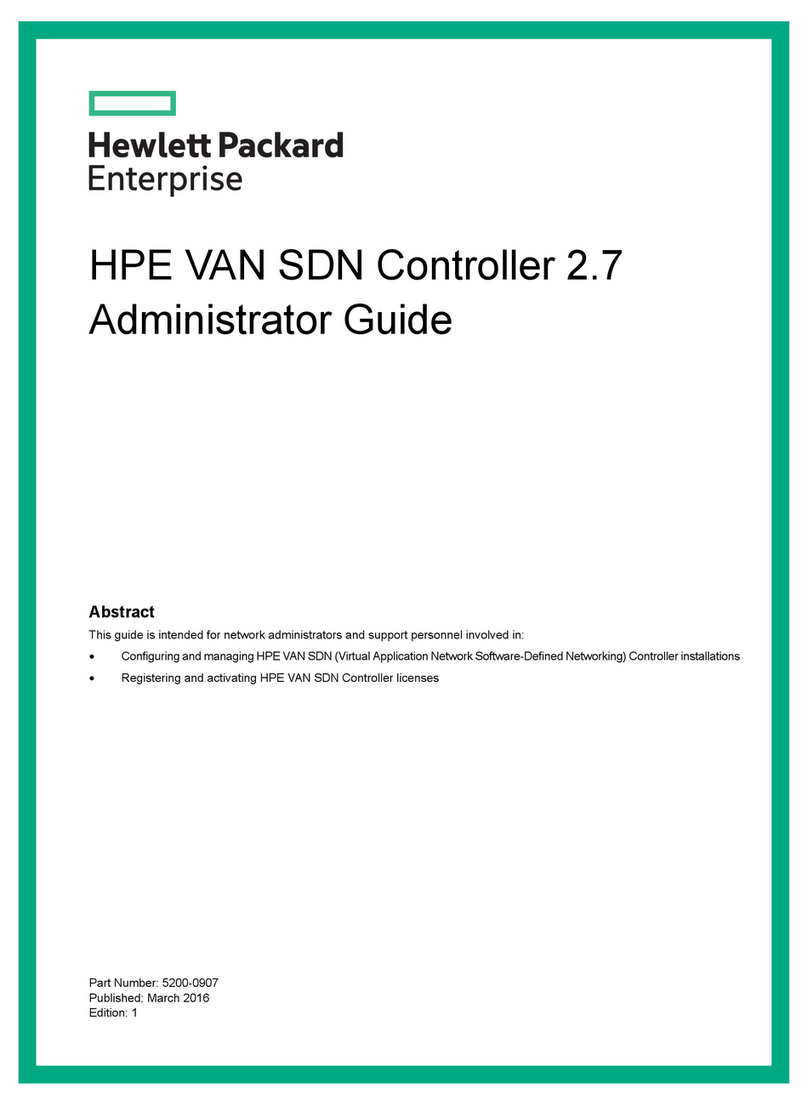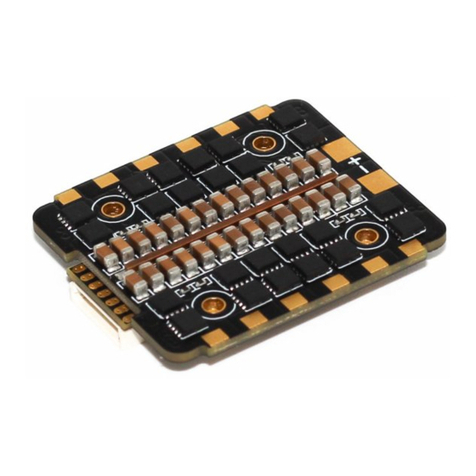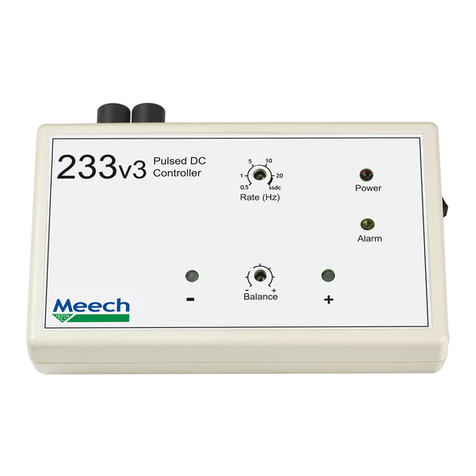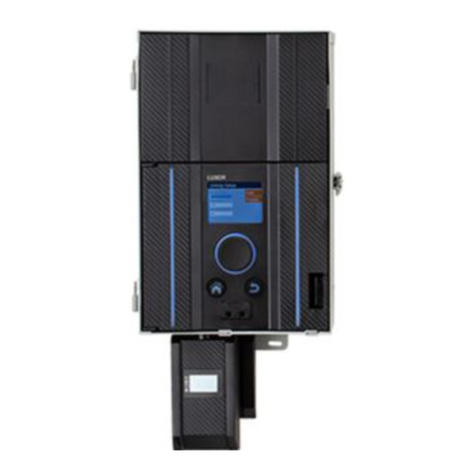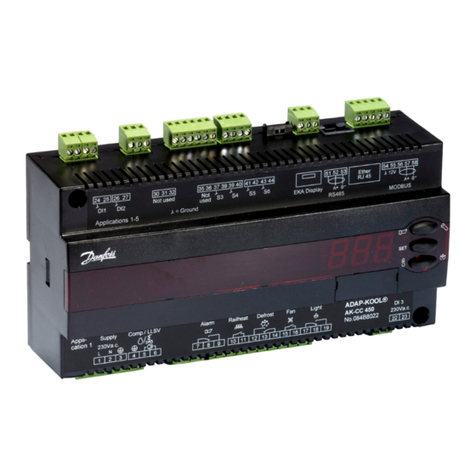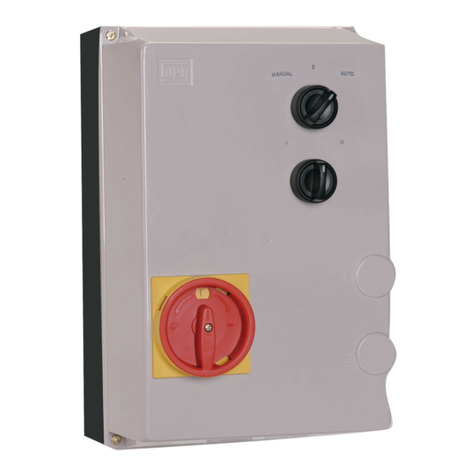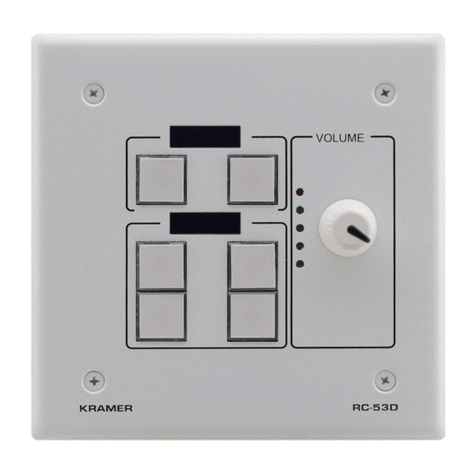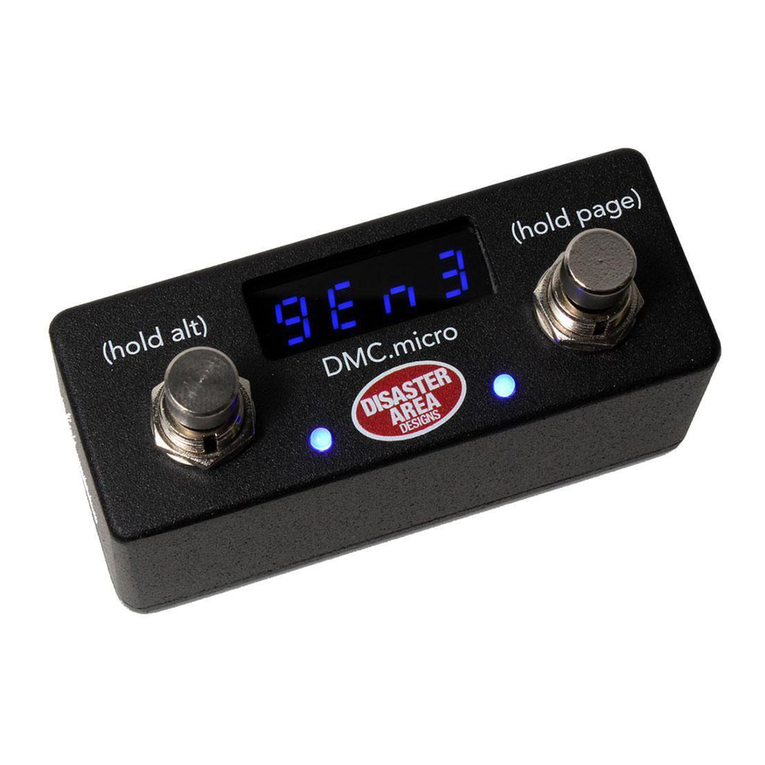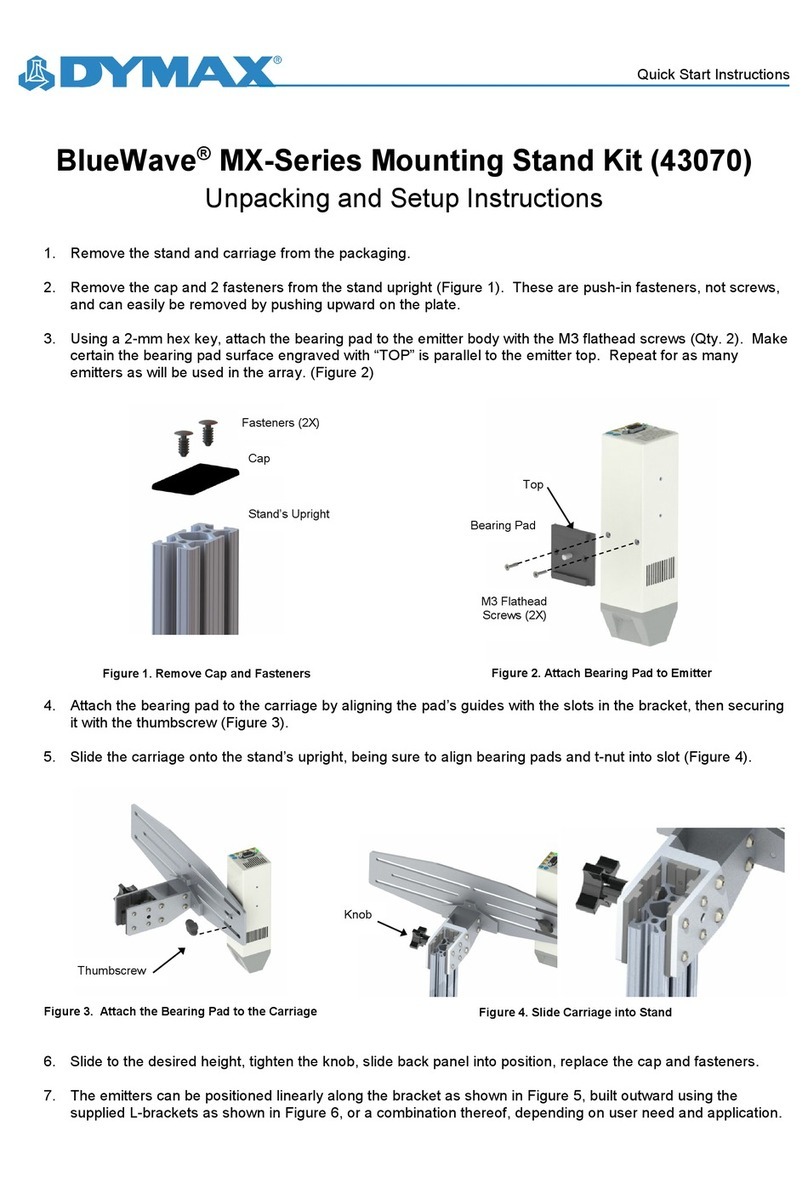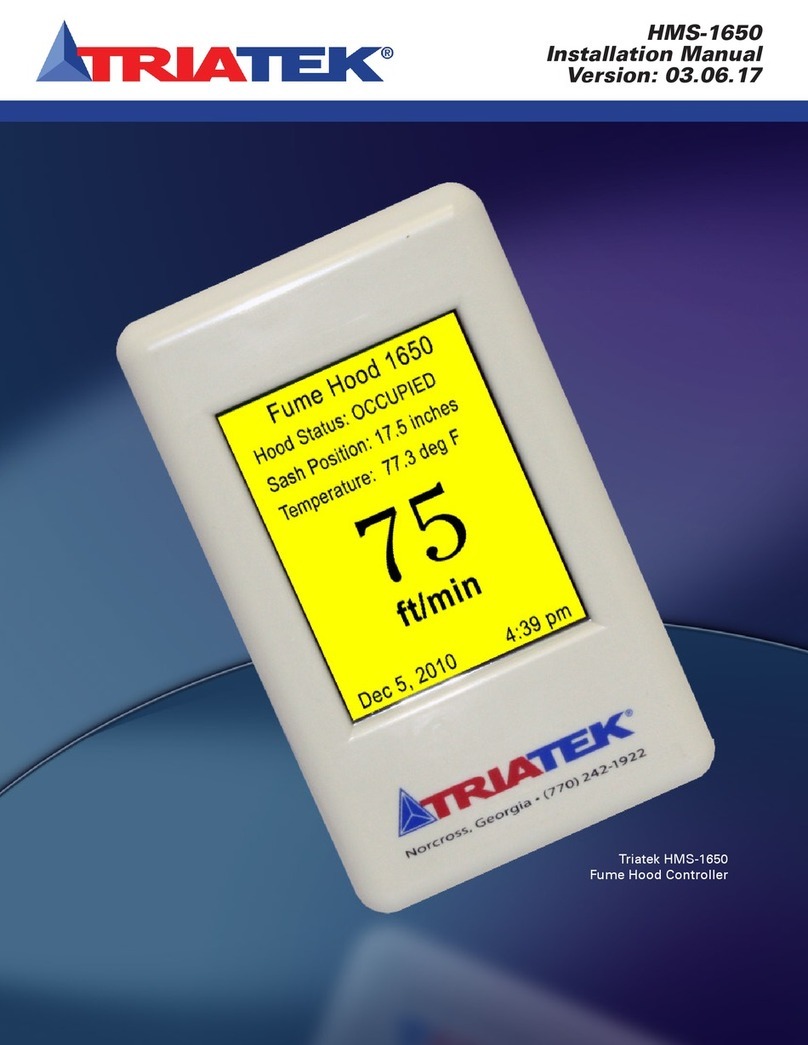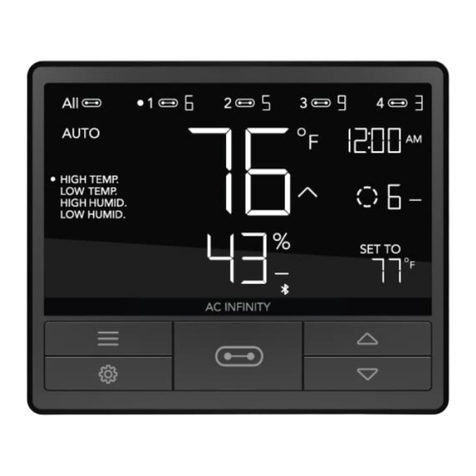Seko Kontrol 800 User manual

0000137242 Rev.5.1
EN
DE
ES
FR
IT
NL
PT
TR
RU
PL
MULTI-PARAMETRIC
INSTRUMENT
INSTALLATION MANUAL
HANDBUCH
MANUAL DE INSTALACION
MANUEL D’INSTALLATION
MANUALE D’INSTALLAZIONE
INSTRUCTIES MANUAL
INSTRUKCJA OBSŁUGI
MANUAL DE INSTALAÇÃO
KULLANIM KLAVUZU
РУКОВОДСТВО ПО УСТАНОВКЕ ИЭКСПЛУАТАЦИИ

0000137242 Rev.5.1

0000137242 Rev.5.1
1
MULTI-PARAMETRIC INSTRUMENT
FOR THE MEASUREMENT OF
PH – REDOX – CHLORINE – TEMPERATURE
1
General Information
Page 2
2
General Description
Page 3
3
Settings and Functionality
Page 8
4
Programming Screen
Page 15
5
Troubleshooting guide
Page 27

0000137242 Rev.5.1
2
1 GENERAL INFORMATION
1.1 INFORMATION REGARDING THE MANUAL
This document contains confidential information. This information may be subject to modifications and updates
without any prior notice.
This manual is an integral part of the instrument. At the time of the device’s first installation, the operator must
carefully check the contents of the manual in order to verify its integrity and completeness.
In order to guarantee the device’s proper functionality and operator safety, it is fundamental that the operative
procedures and precautions described in this manual be respected.
Before using the device, the manual must be read in all of its parts, in the presence of the device itself, in order to
ensure that the operating modes, the controls, the connections to the peripheral equipment and the precautions for
safe and correct use are clearly understood.
The user manual must be stored, integral and legible in all parts, in a safe place which can be quickly and easily
accessed by the operator during installation, use and/or installation revision operations.
1.2 LIMITATIONS OF USE AND SAFETY PRECAUTIONS
In order to guarantee operator safety and correct device functionality, all of the usage limitations and precautions
listed below must be respected:
ATTENTION: Make sure that all the safety requirements have been met before using the device. The device must
not be powered on or connected to other devices until all of the safety conditions have been met.
1.3 ELECTRICAL SAFETY
ATTENTION: All of the control unit’s connections are isolated from the grounding system (non-insulated grounding
conductor).
DO NOT connect any of these connections to the grounding connector.
In order to guarantee maximum conditions of safety for the operator, it is recommended to follow all of the
indications listed in this manual.
•Only power the device using a mains power supply that complies with the device’s specifications (85-
265Vac 50/60Hz)
•Replace any damaged parts immediately. Any cables, connectors, accessories or other parts of the device
which are damaged or not functioning properly must be replaced immediately. In such cases, contact your nearest
authorized technical assistance centre.
•Only use specified accessories and peripherals. In order to guarantee all of the safety requirements, the device
must only be utilized in conjunction with the accessories specified in this manual, which have been tested for use
with the device itself.
1.4 SAFETY OF THE OPERATING ENVIRONMENT
•The instrument is resistant to liquids. The device must be protected against drips, sprays and/or immersion and
should not be used in environments where such risks are present. Any devices into which liquids may have
accidentally penetrated must be immediately shut off, cleaned and inspected by authorised and qualified
personnel.
•If present, the transparent panel should be closed once the device has been programmed.

0000137242 Rev.5.1
3
•Protection
−IP65
•The device must be utilized within the specified environmental temperature, humidity and pressure
limits. The instrument is designed to operate under the following environmental conditions:
−Temperature of the working environment 0°C to +40°C
−Storage and transport temperature -25°C to +65°C
−Relative humidity 00% to 95% - (without condensation)
ATTENTION: The device must be perfectly inserted into the system.
The system must be maintained operational in full compliance with the foreseen safety regulations.
The parameters set on the analyser’s control unit must comply with the current regulations.
The control unit’s malfunction signals must be located in an area that is constantly supervised by
the system’s maintenance personnel or operators.
Failure to respect even just one of these conditions could cause the control unit’s “logic” to operate
in a potentially dangerous manner for the users of the service.
In order to avoid any potentially dangerous situations, therefore, the system’s service and/or
maintenance personnel are advised to work with the utmost care and to signal any alterations in
the safety parameters in a timely fashion.
As the above issues cannot be monitored by the product in question, the manufacturer shall bear
no responsibility for any property damage or personal injury which may result from such
malfunctions.
2. GENERAL DESCRIPTION
The analyser described in this manual is comprised of the instrument itself as well as the Technical Manual.
The device may be installed upon the electrical panel or else wall-mounted at a maximum distance of 15 metres
from the probe.
It is powered by the mains electrical system (100-240Vac-50/60Hz), with 15W consumption, through a switching
Power Supply.
This device has been designed for the ON-LINE analysis of chemical characteristics in the following applications:
•Biological oxidation systems
•Industrial wastewater drainage and treatment
•Fish farming
•Primary or drinking water systems

0000137242 Rev.5.1
4
2.1 MAIN CHARACTERISTICS
•Power Supply: 100-240 Vac 50/60 Hz, 15Watt (Class 1 Electrical Insulation)
•System duration: 24 hours a day, 7 days a week for 5 years (43800 Hours)
•Operating temperature: 0 to 40°C, relative humidity 0 to 95% (without condensation)
•Data display: 4-line display with 20 large White and Blue characters.
•Keyboard: 7 Keys
•Cable connections: Dual row connectors
•Relays: Six (250 Vac 10 A); Four 100 to 240V Power relays and Two dry contact relays
•Measurements:
opH: 0.00 to 14.00 pH (precision ±0.01 pH)
oRedox: ±2000 mV (precision ±1 mV)
oTemperature: 0 to 105°C (precision 0.5 °C) (Predisposition for PT100 and PT1000 sensor)
oFree chlorine: 0.01 to 5 ppm (precision ±0.01 ppm) (Amperometric Probe)
•Output Modules associated with the chemical measurements:
o2 channel current output, 0/4 to 20mA, 500 Ohm maximum load (precision ± 0.01 mA)
o2 channel Frequency Output (Open Collector NPN/PNP) 0 to 120 pulses per minute
(precision 0.016 Hz)
•Input Modules:
oFlow (pull up) (input for Reed sensor)
oHold
•Data transmission modules:
oRS485 Serial Port (ModBus Standard Protocol)
•Modules integrated upon the mother board:
oClock module with backup battery.
2.2 MECHANICAL INSTALLATION
Mechanical Dimensions
Dimensions (L x H x D)
300x290x143 mm
Installation depth
148 mm
Material
ABS
Installation typology
Wall-mounted
Weight
2.45 Kg
Front Panel
UV resistant polycarbonate

0000137242 Rev.5.1
5
Drill the necessary holes and fasten the instrument to the wall using the support provided.
The cable glands for the electrical connections are located on the lower portion of the control unit. In order to
facilitate the connections, therefore, any other devices must be positioned at least 15 cm away.
Protect the device against any drips and/or sprays of water from adjacent areas during the programming and
calibration phases.
2.2 ELECTRICAL INSTALLATION
2.2.1 CONNECTION TO THE POWER SUPPLY
If possible, keep any high power cables away from the instrument and its connection cable, as these could cause
inductive disturbances, especially for the analogical portion of the system.
Use an alternating 100Vac to 240Vac-50/60Hz power supply. The power supply must be as stabilised as possible.
Absolutely avoid connecting the device to rebuilt power supplies, using transformers for example, where the same
power supply is also used to power other systems (perhaps of an inductive typology). This could lead to the
generation of high voltage spikes which, once emitted, are difficult to block and/or eliminate.
ATTENTION: The electrical line must be equipped with an appropriate circuit breaker, in compliance with the
proper installation standards
It is nevertheless always a good idea to check the quality of the grounding connector. In industrial facilities, it is not
uncommon to find grounding connectors that cause electrical disturbances instead of preventing them; wherever
doubts should arise regarding the quality of the facility’s grounding connectors, it is best to connect the control
unit’s electrical system to a dedicated grounding rod.
2.2.2 CONNECTIONS TO DOSING SYSTEMS
ATTENTION: Before connecting the instrument to the external utilities (outputs and relays), make sure that the
electrical panel is off and that the wires from the Utilities are not live.
WARNING: With a resistive load, each relay contact can sustain a maximum current of 1 amp, at max. 230V, and
therefore a total power of 230 VA.

0000137242 Rev.5.1
6
2.2.3 ELECTRICAL CONNECTIONS TABLE
Terminal
Description
Chlorine
PH-
Redox
PH -
Chlorine
PH-CL-
Redox
1
pH probe (+)
Not Used
PH probe input
2
pH probe (-)
3 - 4
Not used
5
Redox probe (+)
Not Used
Redox
probe
input
Not Used
Redox
probe input
6
Redox probe (-)
7
Amp Chlorine Probe (+)
Chlorine
probe input
(CU-PT)
Not Used
Chlorine
probe input
(CU-PT)
Chlorine
probe input
(CU-PT)
8
Amp Chlorine Probe (-)
9-16
Not used
17
Temperature Probe (Green)
PT100 or PT1000 Temperature Probe Input
18
Temperature Probe (Blue)
19
Temperature Probe (Yellow)
20 - 22
Not used
23
Freq. output (+)
Not Used
pH
pH
pH
24
Freq. output (-)
25
Freq. output (+)
Chlorine
Redox
Chlorine
Chlorine
26
Freq. output (-)
27 - 30
Not used
31
Current output (+)
Not Used
PH
PH
PH
32
Gnd Current output (-)
Output current GND connector
33
Current output (+)
Chlorine
Redox
Chlorine
Chlorine
34 - 36
Not used
37
RS 485 -
RS485 Serial Port
with ModBus RTU protocol
38
RS 485 +
39
RS 485 GND
40
Not used
41
HOLD +
15 to 30 Vdc voltage input
42
HOLD -
43 - 44
REED
REED sensor input
45 - 46
Level 1 Signal
Not Used
PH
PH
PH
47 - 48
Level 2 Signal
Chlorine
Redox
Chlorine
Chlorine
49 - 50
Relay 1 output (dry contact)
Alarm
Alarm
Alarm
Alarm
51 - 52
Relay 2 output (dry contact)
Not Used
Not Used
Not Used
Redox
53
Relay phase (100 to 240Vac)
Not Used
pH relay
pH relay
pH relay
54
Ground
55
Relay neutral (100 to 240 Vac)
56
Relay phase (100 to 240Vac)
Chlorine
relay
Redox
relay
Chlorine relay
Chlorine
relay
57
Ground
58
Relay neutral (100 to 240 Vac)
59
Relay phase (100 to 240Vac)
Temperature Relay
60
Ground
61
Relay neutral (100 to 240 Vac)
62 – 64
Not used
65
Power supply phase (100 to
240 Vac)
100 to 240 Vac 50/60 Hz Power Supply Connector
66
Ground
67
Power supply neutral (100 to
240 Vac)
Example of the Connections Label affixed to the back of the instrument’s connections compartment.

0000137242 Rev.5.1
7
LABELS
!"#$%
&
'()
*+#%, - $ . &/ && &* &+ &# &% &, &- &$ &. */ *& ** *+ *# *% *, *- *$ *. +/ +& +* ++ +# +% +,
+- +$ +. #/ #& #* #+ ## #% #, #- #$ #. %/ %& %+ %# %% %, %- %$ %. ,/ ,& ,* ,+
012) !33)
(2 (2
14567!386
90
14567!38
6
!:;<=
1!>
>!1?3 1456@A6
!:;<=
BA45C1(6!3>2AB36 DC506"AE3665F>36A()6!A5C('74"3"6
?4551(6
?A553!F
5F>36B!*/*+
'()
?4"
53!EC(A5C1(
<GG <H
%*
(B
,#
53E>6>!1?3
5I!I 5J!J
(15
4"3)
90
>!1?3
(15
4"3)
(15
4"3)
(15
4"3)
(15
4"3)
(15
4"3)
(15
4"3)
(15
4"3)
(15
4"3)
(15
4"3) 90
23K32
90
23K32
!:;<=
A2A!E 906>4E> !:;<=6>4E>
(15
4"3)
(2
53E>
,, ,-
>1D3!6"4>>2F
,%
(2
PR
!"#$%
&
'()
*+#%, - $ . &/ && &* &+ &# &% &, &- &$ &. */ *& ** *+ *# *% *, *- *$ *. +/ +& +* ++ +# +% +,
+- +$ +. #/ #& #* #+ ## #% #, #- #$ #. %/ %& %+ %# %% %, %- %$ %. ,/ ,& ,* ,+
012) !33)
(2 (2
14567!386
90
14567!38
6
B2
(15
4"3) 1456@A6
B2
BA45C1(6!3>2AB36 DC506"AE3665F>36A()6!A5C('74"3"6
?4551(6
?A553!F
5F>36B!*/*+
'()
?4"
53!EC(A5C1(
<GG <H
%*
(B
,#
53E>6>!1?3
5I!I 5J!J
(15
4"3)
90
>!1?3
(15
4"3)
(15
4"3)
(15
4"3)
(15
4"3)
(15
4"3)
(15
4"3)
(15
4"3)
(15
4"3)
90
23K32
90
23K32
B2
A2A!E 906>4E> B26>4E>
(15
4"3)
B2
>!1?3
(2
53E>
,, ,-
>1D3!6"4>>2F
,%
(2
PC
!"#$%
&
'()
*+#%, - $ . &/ && &* &+ &# &% &, &- &$ &. */ *& ** *+ *# *% *, *- *$ *. +/ +& +* ++ +# +% +,
+- +$ +. #/ #& #* #+ ## #% #, #- #$ #. %/ %& %+ %# %% %, %- %$ %. ,/ ,& ,* ,+
012) !33)
(2 (2
14567!386
90
14567!38
6
B2
1456@A6
B2
BA45C1(6!3>2AB36 DC506"AE3665F>36A()6!A5C('74"3"6
?4551(6
?A553!F
5F>36B!*/*+
'()
?4"
53!EC(A5C1(
<GG <H
%*
(B
,#
53E>6>!1?3
5I!I 5J!J
(15
4"3)
90
>!1?3
(15
4"3)
(15
4"3)
(15
4"3)
(15
4"3)
(15
4"3)
(15
4"3)
(15
4"3)
(15
4"3)
90
23K32
90
23K32
B2
A2A!E 906>4E> B26>4E>
B2
>!1?3
1!>
>!1?3
!:;<=
(2
53E>
,, ,-
>1D3!6"4>>2F
,%
(2
PRC
!"#$%
&
'()
*+#%,-$ . &/ && &* &+ &# &% &, &- &$ &. */ *& ** *+ *# *% *, *- *$ *. +/ +& +* ++ +# +% +,
+- +$ +. #/ #& #* #+ ## #% #, #- #$ #. %/ %& %+ %# %% %, %- %$ %. ,/ ,& ,* ,+
012) !33)
(2
14567!38
6
B2
(15
4"3) 1456@A6
B2
BA45C1(6!3>2AB36 DC506"AE3665F>36A()6!A5C('74"3"6
?4551(6
?A553!F
5F>36B!*/*+
'()
?4"
53!EC(A5C1(
<GG <H
%*
(B
,#
53E>6>!1?3
5I!I 5J!J
(15
4"3)
(15
4"3)
(15
4"3)
(15
4"3)
(15
4"3)
(15
4"3)
(15
4"3)
(15
4"3)
(15
4"3)
23K32
B2
A2A!E B26>4E>
(15
4"3)
B2
>!1?3
(2
53E>
(15
4"3)
(15
4"3)
(15
4"3)
(15
4"3)
,, ,-
>1D3!6"4>>2F
,%
(2
CL

0000137242 Rev.5.1
8
3.0 SETTINGS AND FUNCTIONALITY
3.1 INSTRUMENT DISPLAY
AB
The right/left keys can be used to select display modes A and B
Note: Any unavailable chemical measurements will not be displayed.
Mode A
Line 1 = Time; system water flow status
Line 2 = pH measurement display; Temperature measurement display.
Line 3 = Chlorine display; Network connection through RS485 serial port ( symbol)
Line 4 = ORP (Redox) display; Hold signal or OFA alarm flashing display, Available Alarms list display.
Mode B
Line 1 = pH dosing pump status, pH measurement display, Hold signal or OFA alarm flashing display.
Line 2 = Chlorine dosing pump status, Chlorine measurement display
Line 3 = ORP (Redox) dosing pump status, ORP (Redox) measurement display
Line 4 = Temperature relay status,Temperature measurement display; Available Alarms list display.
3.2 INSTRUMENT KEYBOARD
Esc/Mode = Dual function key
Esc= Exits the menu
Mode= Displays the measurement SetPoints (hold down for 3 seconds)
Cal = Accesses the calibration menu (hold down for 3 seconds)
Enter = Confirms the function, Displays the alarms list (hold down for 3 seconds)
Esc+Enter = Key combination for accessing the programming menu (hold down for 3 seconds)
Navigation keys= Up, Down, Right, Left for selecting parameters and navigating the menus
12:30 FLOW ON
pH 7.20 pH Tm 25.0°C
CL 1.50 ppm
ORP 750 mV Hold A
P ON pH 7.40 pH Hold
P ON CL 0.80 ppm
P OFF ORP 700 mV
R ON T 25.0°C A

0000137242 Rev.5.1
9
3.3 CALIBRATING THE OPERATING PARAMETERS
Note: Any unavailable chemical measurements will not be displayed.
Calibration can be carried out using the menus shown on the display. Hold down the CAL key for 3 seconds to
access the Calibration menu.
Use the Up and Down keys to select the probe to be calibrated and press ENTER.
3.3.1 PH PROBE CALIBRATION
Connect the pH probe to the instrument as indicated in the electrical connections.
Select the pH probe from the Calibration menu.
Select whether to perform the calibration in Automatic (AUTO) or Manual (MAN) mode.
At the end of each calibration point, the instrument will display the quality of the electrode as a percentage.
-------------------Calibration----------------------
pH
ORP
CL ↓
-------------------Calibration----------------------
ORP ↑
CL
Temp
pH CAL. Type: Auto
pH CAL. Type: Auto
7.00pH 25.0°C
pH CAL. Type: Auto
7.00pH 25.0°C
Wait 60”
pH CAL. Type: Auto
4.00pH 25.0°C
Wait 60”
AUTO
In Automatic (AUTO) mode:
•Immerse the probe in the 7 pH solution and
press Enter
•Wait 60 seconds. When finished, the
instrument will display the probe’s quality as
a percentage value.
•Immerse the probe in the 4 pH or 9.22 pH
solution and press Enter
•Wait 60 seconds. When finished, the
instrument will display the probe’s quality as
a percentage value.
•Once the operation has concluded, a
message will appear indicating that the
calibration has been carried out successfully.

0000137242 Rev.5.1
10
At the end of each calibration point, the instrument will display the quality of the electrode as a percentage.
3.3.2 ORP (REDOX) PROBE CALIBRATION
Connect the ORP probe to the instrument as indicated in the electrical connections.
Select the ORP probe from the Calibration menu.
Select whether to perform the calibration in Automatic (AUTO) or Manual (MAN) mode.
At the end of each calibration point, the instrument will display the quality of the electrode as a percentage.
pH CAL. Type: Man
pH CAL. Type: Man
7.01pH 25.0°C
pH CAL. Type: Man
7.00pH 25.0°C
Wait 60”
pH CAL. Type: Man
4.01pH 25.0°C
Wait 60”
ORP CAL. Type: Auto
ORP CAL. Type: Auto
+475mV
ORP CAL. Type: Auto
+475mV
Wait 60”
MAN
In Manual (MAN) mode:
•Immerse the probe in the first solution, insert
the solution’s pH value and press Enter
•Wait 60 seconds. When finished, the
instrument will display the probe’s quality as
a percentage value.
•Immerse the probe in the second solution
and insert the solution’s pH value..
•Wait 60 seconds. When finished, the
instrument will display the probe’s quality as
a percentage value.
•Once the operation has concluded, a
message will appear indicating that the
calibration has been carried out successfully.
AUTO
In Automatic (AUTO) mode:
•Immerse the probe in the +475mV solution
and press Enter
•Wait 60 seconds. When finished, the
instrument will display the probe’s quality as
a percentage value.
•Once the operation has concluded, a
message will appear indicating that the
calibration has been carried out successfully.

0000137242 Rev.5.1
11
At the end of each calibration point, the instrument will display the quality of the electrode as a percentage.
3.3.3 CL (CHLORINE) PROBE CALIBRATION
Connect the probe to the instrument as indicated in the electrical connections.
Select the CL probe from the Calibration menu.
ORP CAL. Type: Man
ORP CAL. Type: Man
+475mV
ORP CAL. Type: Man
+475mV
Wait 60”
CL CAL. Type: MAN
0.50 ppm
CL CAL. Type: MAN
1.20 ppm
CL CAL. Type: MAN
1.20 ppm
Wait 10”
In Manual (MAN) mode:
•Immerse the probe in the solution, insert the
solution’s mV value and press Enter
•Wait 60 seconds. When finished, the
instrument will display the probe’s quality as
a percentage value.
•Once the operation has concluded, a
message will appear indicating that the
calibration has been carried out successfully.
MAN
In Manual (MAN) mode:
•Use a reference instrument to read the
chlorine value.
•Adjust the value shown on the display to
match the value read by the reference
instrument. Press Enter to confirm.
•Wait 10 seconds for the calibration to
complete.
•Once the operation has concluded, a
message will appear indicating that the
calibration has been carried out successfully.

0000137242 Rev.5.1
12
3.3.4 TEMPERATURE PROBE CALIBRATION
Connect the probe to the instrument as indicated in the electrical connections.
Select the TEMP. probe from the Calibration menu.
TEMP CAL. Type: MAN
25.0°C
CL CAL. Type: MAN
28.0°C
CL CAL. Type: MAN
28.0°C
Wait 10”
In Manual (MAN) mode:
•Use a reference instrument to read the
temperature value.
•Adjust the value shown on the display to
match the value read by the reference
instrument. Press Enter to confirm.
•Wait 10 seconds for the calibration to
complete.
•Once the operation has concluded, a
message will appear indicating that the
calibration has been carried out successfully.

0000137242 Rev.5.1
13
RESET ALARMS RELAY
NO
3.4 VIEWING ALARMS
The alarms recorded by the instrument can be viewed using the menus shown on the display. Hold down the
ENTER key for 3 seconds to access the ALARMS menu.
The menu contains the following items:
1) View recorded alarms
Number of alarms present in the list (1/14)
Date
List of Alarms with time of recording,
use the up and down keys to scroll through
the list.
2) Reset Alarms list
Use the up and down keys to select
No/Yes and press ENTER
3) Reset Alarms Relay
Use the up and down keys to select
No/Yes and press ENTER
This function can be used to shut off the
alarms relay.
4) Reset OFA
Use the up and down keys to select
No/Yes and press ENTER
ALARMS
VIEW ALARMS
RESET ALARMS LIST
RESET ALARMS RELAY
↓
ALRM 01/14 12/12/11
05:59 PH HIGH
06:00 RX LOW
06:10 RX LOW ↓
RESET ALARMS LIST
NO
ALARMS
RESET ALARMS LIST ↑
RESET ALARMS RELAY
RESET OFA
RESET OFA
NO

0000137242 Rev.5.1
14
MODE
SP PH 7.20 P: OFF
SP CL 1.20 P: ON
SP ORP 720 P: OFF
Top Secret
Internal Testing
MODE
SP PH 7.20 P: OFF <
SP CL 1.20 P: ON
SP ORP 720 P: OFF
3.5 QUICK MODE MENU SETTINGS.
In order to display the quick MODE menu, hold down the ESC/MODE key for 3 seconds to access the MODE
menu
Use the up and down keys to select the desired item
and press ENTER to modify the Set Point value (the
symbol “<” will appear on the right). Press ENTER
again to confirm.
Press ESC to exit the menu.
3.6 HIDDEN MENUS
The instrument contains the following hidden menus:
Reset DEFAULT parameters
To access this menu, do the following:
1) Shut off the instrument
2) Hold down the Up and Down keys and turn on
the instrument.
The message shown to the side will appear. Use the up and down keys to select No/Yes and press ENTER
Reset DEFAULT parameters
To access this menu, do the following:
3) Shut off the instrument
4) Hold down the Right and Left keys and turn
on the instrument.
The message shown to the side will appear. Press the ESC key
INIT TO DEFAULT?
NO

0000137242 Rev.5.1
15
4 PROGRAMMING
When turned on, the system automatically goes into measurement and dosing mode – RUN function.
Press the ESC and ENTER keys simultaneously to enter the programming mode. Next, press ENTER to access
the various menus. In this manner, all of the outputs will be disabled.
Use the UP and DOWN keys to scroll through the various menus and submenus and to modify the data
(increase/decrease).
Use the ENTER key to access the data insertion submenus and to confirm any modifications.
Use the ESC key to return to the previous menu or function without saving any changes.
All of the instrument’s main menu items are shown below:
4.1 LANGUAGE MENU (menu navigation index = 1)
This function allows for the software’s interface language to be selected from amongst: English, French, German,
Spanish and Italian.
The set language is indicated with an arrow, for example: > Italian.
4.2 CALIBRATION MENU (menu navigation index = 2)
Please refer to the previous sections, in particular section 3.3 CALIBRATING THE OPERATING PARAMETERS.
1--------------------LANGUAGE----------------------
ENGLISH
FRENCH
GERMAN ↓
3
1---------------------LANGUAGE---------------------
GERMAN ↑
SPANISH
> ITALIAN
2------------------Calibration----------------------
2A pH
2B ORP
2C CL ↓
2------------------Calibration----------------------
2B ORP ↑
2C CL
2D Temperature
----------------------SETUP---------------------------
1 LANGUAGE IT
2 CALIBRATION
3 SETTINGS ↓
3
----------------------SETUP---------------------------
3 SETTINGS ↑
4 STATISTICS
5 ADVANCED
3

0000137242 Rev.5.1
16
4.3 SETTINGS MENU (menu navigation index = 3)
Select the menu item to be set and press ENTER to confirm.
Using the following structure, the settings menu is divided into levels in order to allow for the easy
identification of the sub-menus
•3 Settings
o3A pH
!3A1 Relays
•ON/OFF Settings
•Timed Settings
•Proportional Settings
!3A2 Frequency Output
!3A3 Current Output
!3A4 Alarms
o3B Chlorine
!3B1 Relays
•ON/OFF Settings
•Timed Settings
•Proportional Settings
!3B2 Frequency Output
!3B3 Current Output
!3B4 Alarms
!3B5 Reference temperature for chlorine measurement.
!3B6 Compensation of chlorine measurement based on conductivity present in
water.
o3C Redox
!3C1 Relays
•ON/OFF Settings
•Timed Settings
•Proportional Settings
!3C2 Frequency Output
!3C3 Current Output
!3C4 Alarms
o3D Temperature
!3D1 Relays
•ON/OFF Settings
•Timed Settings
•Proportional Settings
!3D2 Frequency Output
!3D3 Current Output
!3D4 Alarms
Detailed instructions for setting the parameters are provided below.
3------------------SETTINGS-----------------
3A pH
3B CHLORINE
3C REDOX ↓
3------------------SETTINGS------------------
3B CHLORINE ↑
3C REDOX
3D TEMPERATURE

0000137242 Rev.5.1
17
4.3.1 pH MEASUREMENT SETTINGS MENU (menu navigation index = 3A)
Use the UP and DOWN keys to scroll through the various menus and submenus and to modify the data
(increase/decrease).
Use the ENTER key to access the data insertion submenus and to confirm any modifications.
The various items contained within the pH measurement sub-menus are described below:
•Menu index “3A1” PH RELAY
The various items contained within the pH relay’s sub-menus are described below, with their various modes,
ranges and settings:
Item
Default Value
Range
Note
On/Off
SetPoint:
7.20 pH
0-14 pH
Dose Type:
Acid
Acid / Alka
Hysteresis:
Off
0.10-3 pH
Hysteresis Time:
Off
1-900 Seconds
Start Delay:
Off
3-900 Seconds
Stop Delay:
Off
3-900 Seconds
Timed
SetPoint:
7.20 pH
0-14 pH
Dose Type:
Acid
Acid / Alka
Hysteresis:
Off
0.10-3 pH
Hysteresis Time:
Off
1-900 Seconds
Start Delay:
Off
3-900 Seconds
Stop Delay:
Off
3-900 Seconds
On Time:
1
1-1800 Sec
Off Time:
1
1-1800 Sec
PWM (Proportional)
SetPoint:
7.20 pH
0-14 pH
Dose Type:
Acid
Acid / Alka
Hysteresis:
Off
0.10-3 pH
Hysteresis Time:
Off
1-900 Seconds
Start Delay:
Off
3-900 Seconds
Stop Delay:
Off
3-900 Seconds
Period:
20 seconds
20-1800
Proportional Band:
0.3 pH
0.3-3pH
3A PH DOSING
3A1 RELAY ON/OFF
3A2 FMW (Frequency Output)
3A3 OUTmA (Current Output) ↓
3A PH DOSING
3A2 FWM (Frequency Output) ↑
3A3 OUTmA (Current Output)
3A4 ALARMS
3A1 PH RELAY
>ON/OFF
TIMED (Timed dosing)
PWM (Proportional dosing)
The pH relay’s settings can be varied as follows:
•ON/OFF (SetPoint threshold dosing)
•TIMED (Timed dosing)
•PWM (Proportional dosing)

0000137242 Rev.5.1
18
•Menu index “3A2” Frequency output proportional to pH measurement (FWM PH)
The frequency output (Open collector circuit) can be used to control and guide the dosing of a remote
system in proportion to the pH measurement.
•Menu index “3A3” Current output proportional to pH measurement (OUT mA PH)
Note: The value set under the HOLD mA item is automatically generated by the instrument when a functional Hold
is present, for example due to a lack of water Flow Alarm or an enabled Voltage Input.
•Menu index “3A4” PH ALARMS
Note: The Holding Range and Holding Time items must be used together.
The indicated function controls the chemical measurement at a constant value for long periods of time. This alarm
can help to prevent incorrect dosing as a result of damaged probes.
Item
Default Value
Range
Standard FWM:
SetPoint:
7.20 pH
0-14 pH
Dose Type:
Acid
Acid / Alka
Pulse:
20 pulses/minute
20-150 pulses/minute
Proportional Band:
0.3 pH
0.3-3pH
Item
Default Value
Range
Standard Out mA:
Range 0/4-20mA:
4-20 mA
0-20 mA or 4-20 mA
Start (4mA):
0 pH
0.00 - 14.00 pH
End (20mA):
14 pH
14.00 - 0.00 pH
Hold mA:
4 mA
0-20 mA
Item
Default Value
Range
pH Alarms List
Alarm minimum:
6.2 pH
0-14 pH
Alarm Maximum:
8.2 pH
0-14 pH
OFA (Maximum dose timer)
Off
10-3600 Seconds
Holding range:
Off
0.2-3 pH
Holding time:
Off
10-3600 Seconds
Level Alarm: System stop or
alarm display
Disabled
Enabled/Disabled
3A2 FWM PH
SET POINT: 7.20pH
DOSE TYPE: ACID
PULSE: 20/min ↓
3A2 FWM PH
DOSE TYPE: ACID ↑
PULSE: 20/min
PROP. BAND: 0.30pH
3A3 OUT mA PH
RANGE: 4-20 mA
START( 4): 0.00pH
END (20): 14.00pH ↓
3A3 OUT mA PH
START( 4): 0.00pH ↑
END (20): 14.00pH
HOLD mA: 4.00mA
3A4 PH ALARMS
MIN VAL.: 6.20pH
MAX VAL.: 8.20pH
OFA: OFF ↓
3A4 PH ALARMS
HOLDING RANGE: OFF ↑
HOLDING TIME: OFF
LEVEL ALARM: DISABLED
Table of contents
Languages:
Other Seko Controllers manuals
Popular Controllers manuals by other brands

Mitsubishi Electric
Mitsubishi Electric MELSEC iQ-R Series user manual

Unidrive
Unidrive ZoneLogix 301216 Installation and troubleshooting guide
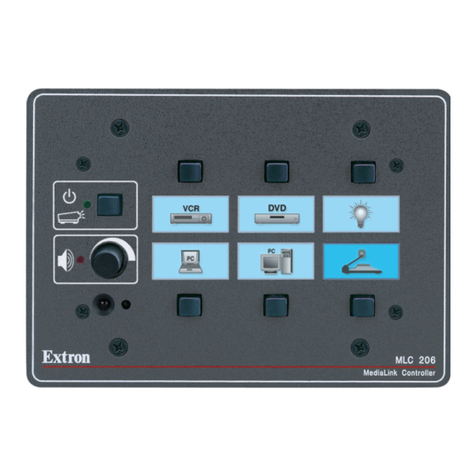
Extron electronics
Extron electronics MEDIALINK MLC 206 Setup guide
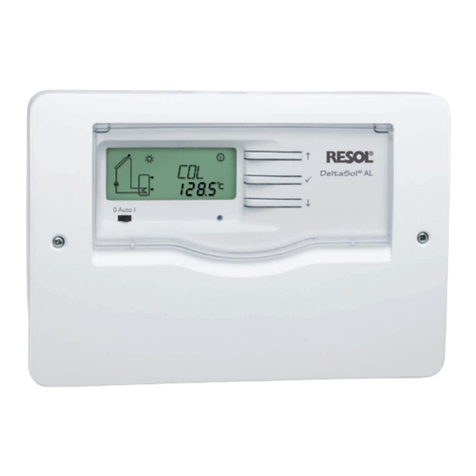
Resol
Resol DeltaSol AL Installation & operation
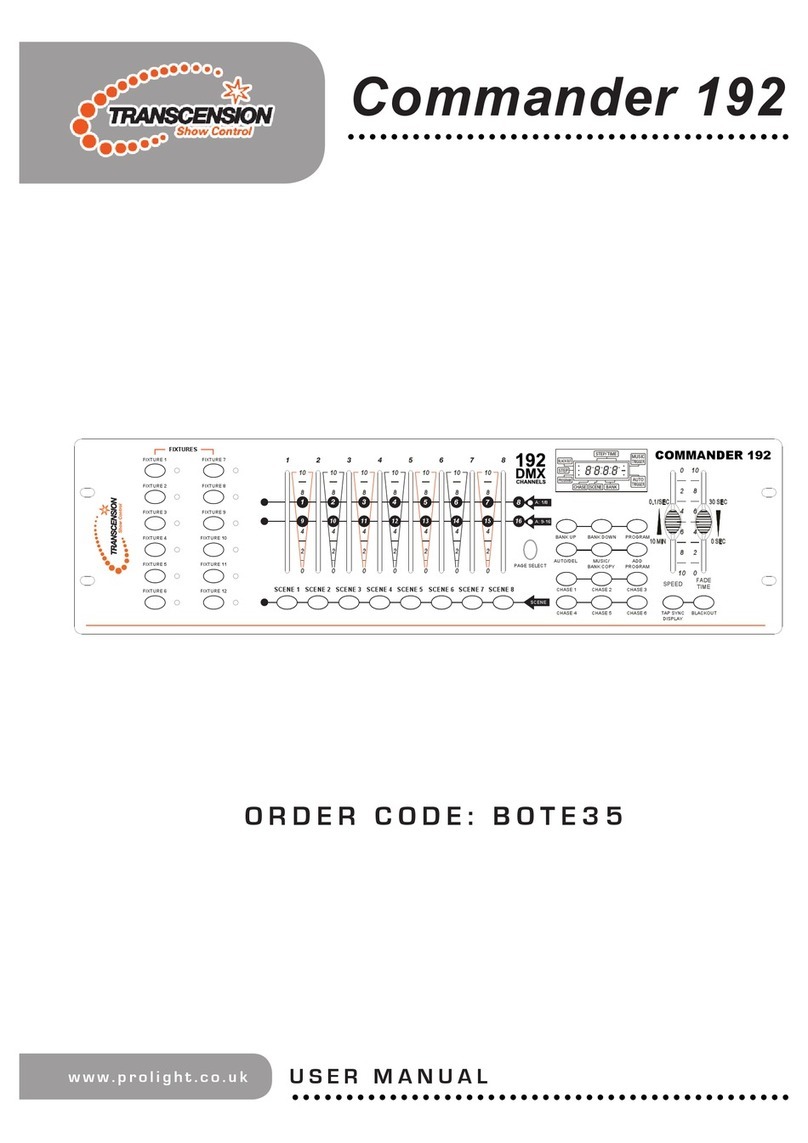
Transcension
Transcension Commander 192 manual
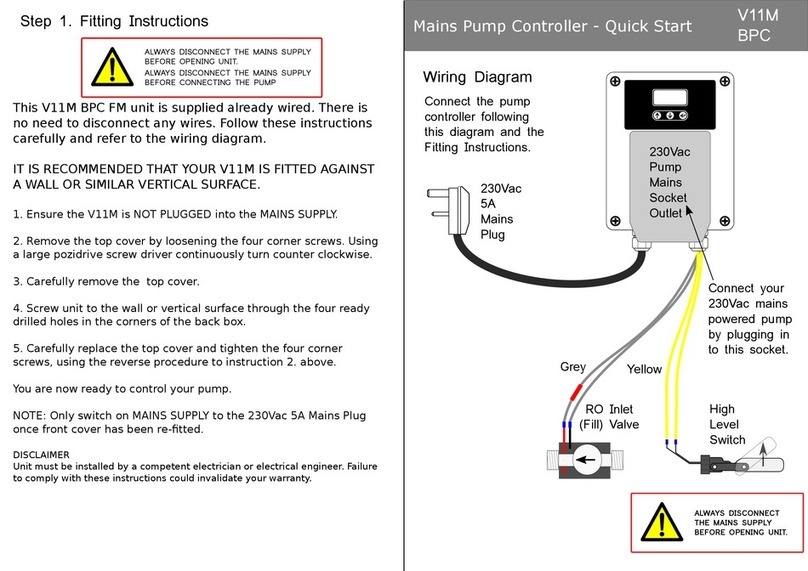
Spring
Spring V11M BPC quick start
